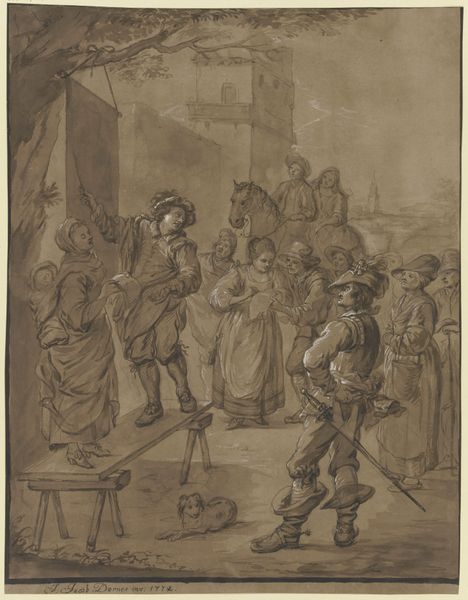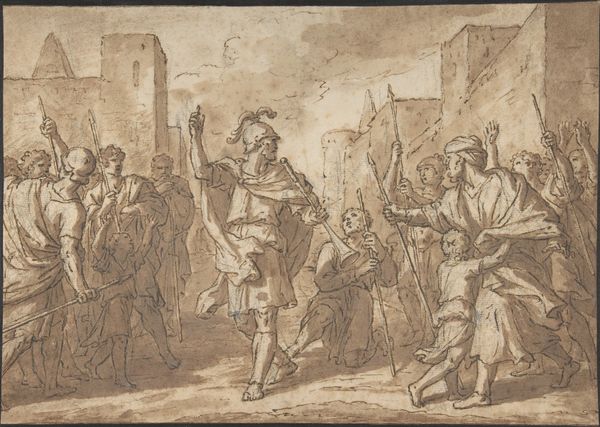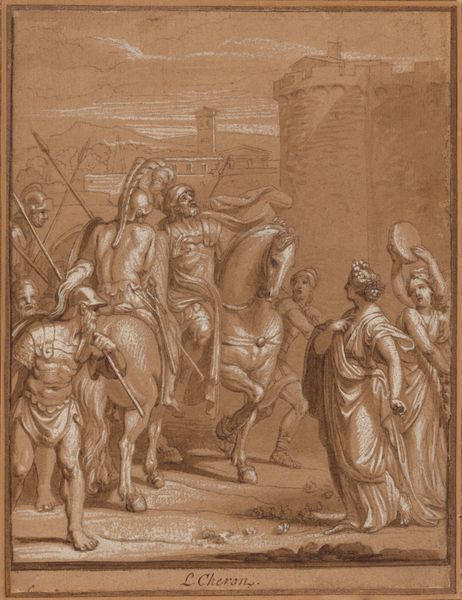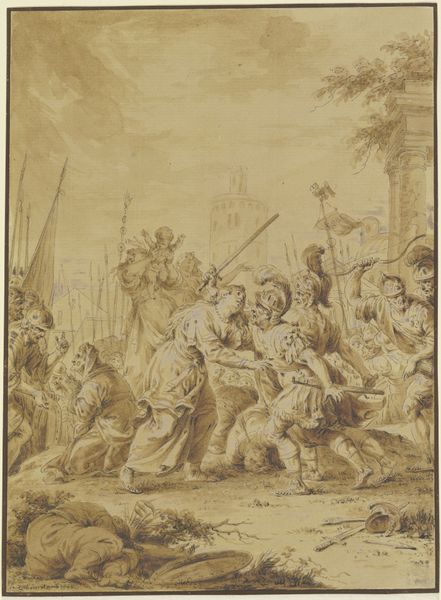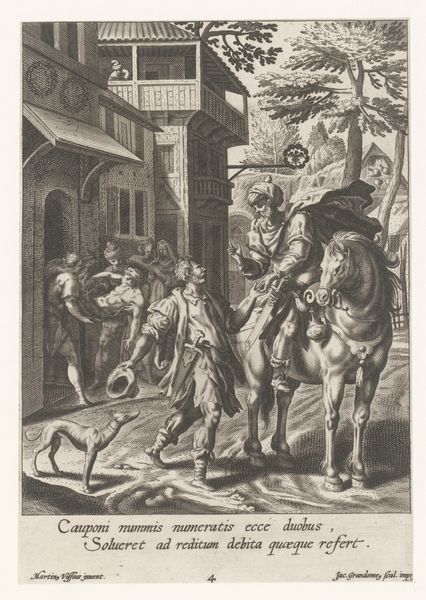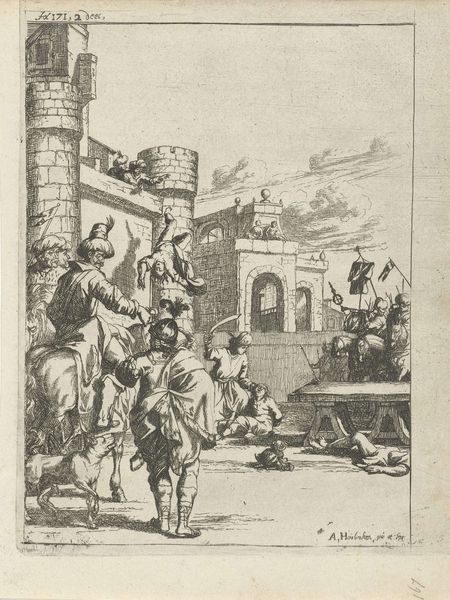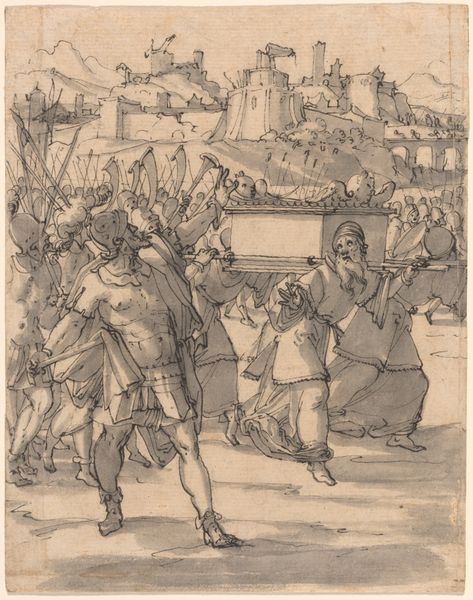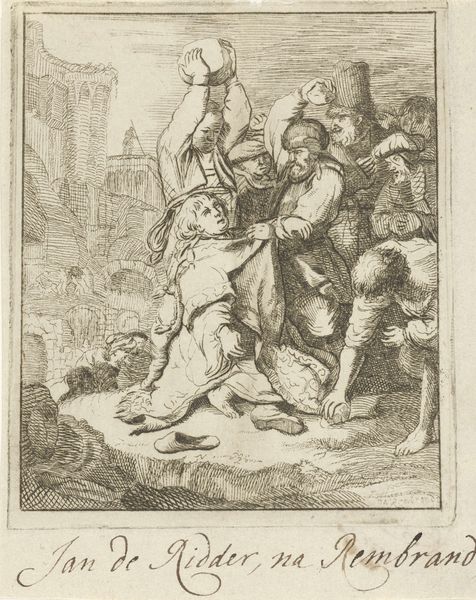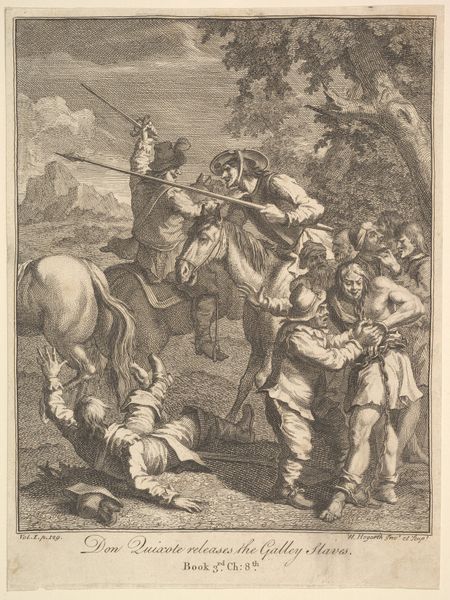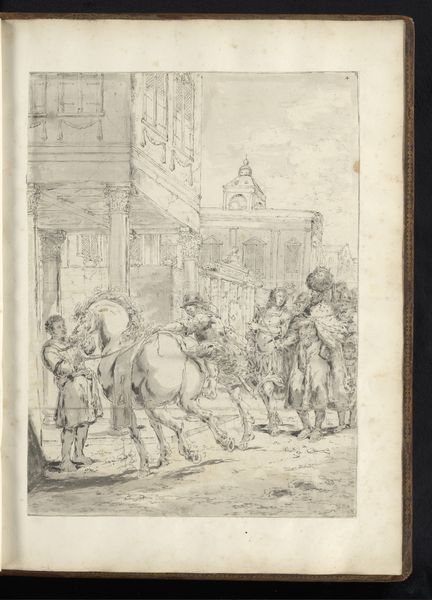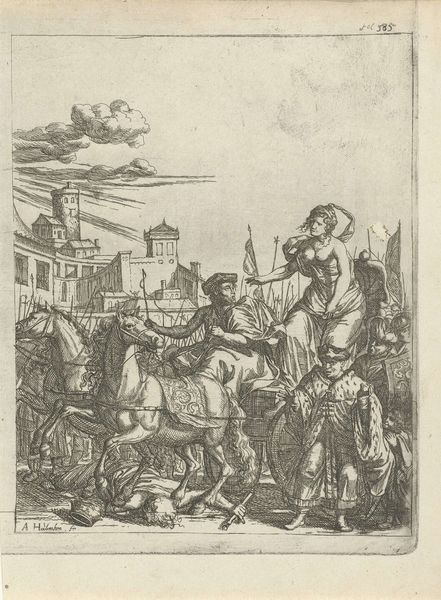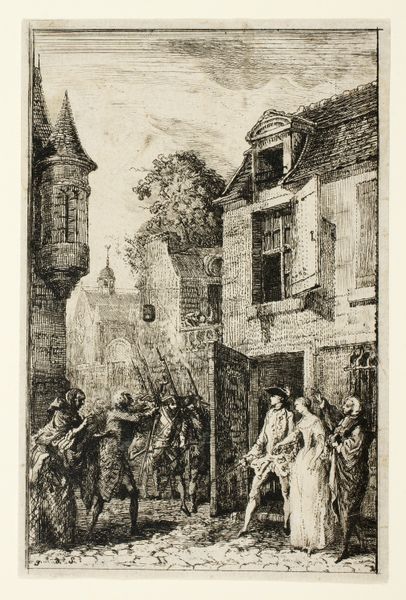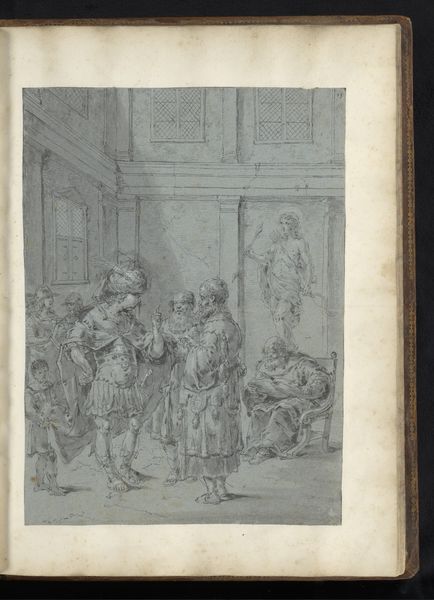
drawing, pencil
#
drawing
#
baroque
#
landscape
#
coloured pencil
#
pencil
#
genre-painting
Dimensions: overall: 32.7 x 28 cm (12 7/8 x 11 in.)
Copyright: National Gallery of Art: CC0 1.0
Curator: Here we have Jean-Baptiste Oudry's "L'Arrivee de l'Operateur dans l'hotellerie," created around 1727. It’s rendered in pencil and colored pencil, presenting a fascinating glimpse into the society of the time. Editor: My initial reaction is of a bustling scene, but shrouded in a kind of dusky quiet. It feels both active and strangely muted, with that monochromatic palette adding a layer of distance. Curator: Indeed. Oudry was deeply concerned with capturing scenes of everyday life and imbuing them with a certain theatrical flair. Look how he's framed the entrance – it turns the courtyard almost into a stage. These comings and goings in hostelries often were sites of spectacle. Editor: Absolutely. And Oudry packs this stage with specific characters and details – notice the monkey perched jauntily on the man's shoulder! Monkeys are age-old symbols, standing in for mimicry and human folly. Their presence infuses a satirical edge into what might seem at first a simple scene. Curator: And the title gives a clue as to what kind of play is playing out, so to speak. One could infer that the opera performer represents a changing society— the arts in some disarray or under the scrutiny of new emerging social codes. Editor: The figure on horseback gestures expansively as though inviting us into this drama—leading our eye deeper. Perhaps he acts as a human connection—a symbolic mediator—between our space and theirs. Curator: Consider also the architectural background: solid structures of French society with grand entryways, the setting of power that the opera—or perhaps art in general—engages with. These social structures, then, have stories of their own, with histories being told alongside the performance in the forefront. Editor: It's all so interconnected. A fleeting moment that seems like a slice of daily life reveals, upon closer inspection, an elaborate commentary on culture, power, and perception, with little symbols peppered across the image, awaiting to be found by its audience. I love how much meaning the artist crams into these genre scenes! Curator: It makes you wonder about the larger debates about theatre, public life, and shifting norms during Oudry’s time, what was considered art’s legitimate place. The drawing certainly leaves us much to consider.
Comments
No comments
Be the first to comment and join the conversation on the ultimate creative platform.
